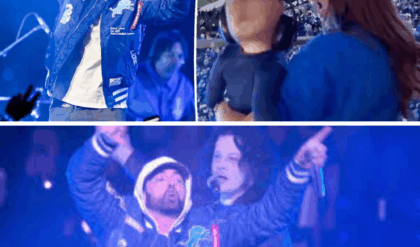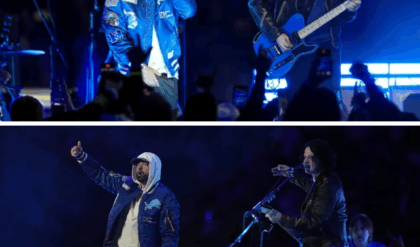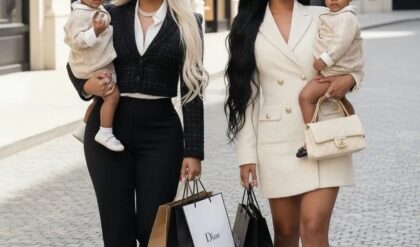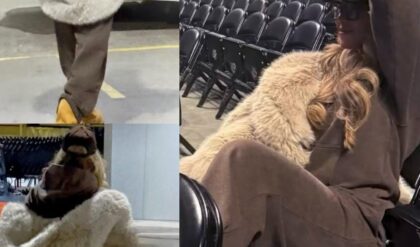
Star Wars is one of the most culturally influential and ever-present franchises in entertainment history. Before Marvel superheroes took over every screen of the theater complex, or Games Of Thrones claimed Sunday night appointment television, the space opera created by George Lucas was one of the first pieces of pure genre storytelling that bled into every corner of society.
Almost fifty years after the release of the first installment in 1977, the series has spawned three trilogies, an animated show, several spinoff series, and a lore so complicated that it probably deserves its own academic major (if one doesn’t exist already).
Star Wars has a place within the queer canon in the same way as other science fiction or fantasy; as a different world (a galaxy far far away, in this case) where outcasts and people that feel like they don’t belong can escape to. It’s perhaps the main reason this genre attracts so many queer fans, even if the content itself hasn’t always included us in an overt way: You can be anything in a land that doesn’t exist.
This week, to celebrate May the Fourth, the worldwide day of celebration of all things Star Wars, we are diving into what is perhaps the most misaligned, misunderstood, and surprisingly most unabashedly queer spawn of its cinematic universe: the 1978 Star Wars Holiday Special.
The Set-Up
This television-only special aired on CBS on November 17, 1978, just over a year after the first movie was released. It follows Han Solo (Harrison Ford) and Chewbacca (Peter Mayhew) as they try to make it back to Chewie’s home planet in time to celebrate “Life Day,” a broad religious celebration that resembles what we may recognize as Christmas or Easter.
Of course, the journey home is not without its obstacles, and as our heroes travel through the galaxy, other characters from the franchise (including Mark Hamill’s Luke Skywalker, Carrie Fisher’s Princess Leia and R2D2), new additions to the universe (We meet Chewie’s wife and son! Boba Fett is introduced for the first time!) and truly bizarre celebrity cameos populate the nearly ninety minutes (plus commercials) of the show.
The Star Wars Holiday Special is considered by many as one of the worst pieces of media ever produced, both by Star Wars fans and more casual viewers alike. It was never shown again after its original airing, and it is pretty much impossible to find through any legitimate channels, which gives it an even bigger cult-like, underground status.
However, watching it almost fifty years later through the lens of this column, it’s surprising how much of it feels both borrowed from and tailored to queer sensibilities. (It was co-written by Bruce Vilanch, after all!)
In Space, No One Can Hear You Squee
 Image Credit: ‘Star Wars Holiday Special,’ Lucasfilm / 20th Century Television
Image Credit: ‘Star Wars Holiday Special,’ Lucasfilm / 20th Century Television
The special is clearly inspired by variety shows of the ’50s, ’60s and ’70s; those loosely-threaded hours of television that managed to pack a mixture of narrative storytelling, celebrity interviews, musical performances and comedy routines into a single episode—the Ed Sullivans and Judy Garlands and Carol Burnetts and Sonny and Chers, even a little bit of the Muppets.
(We could write an entirely separate piece about how these shows have always had huge resonance with the queer community, either because it featured icons close to us front-and-center, or for the blatant display of glitz and glamor that were paraded through every week.)
The Star Wars Holiday Special takes this tradition to heart, especially with legendary director Steve Binder—who was responsible for iconic programs like Elvis Presley’s ’68 Comeback Special and Diana Ross Live In Central Park—behind the camera.
And even though the main “story” revolves around Han and Chewie traveling through space, the special is peppered with segments that range from a troop of circus acrobats in alien makeup doing tricks, to animated shorts, cooking segments, and musical performances starring established, bonafide gay icons.
Queens Of The Universe
Three segments in particular make the case for this special to be grounded in pretty specific queer roots.
First, as Chewie’s family eagerly awaits his return, his wife Malla tries to prepare a meal for him. She turns on whatever artifact operates as a television in their planet, and watches a cooking show starring Chef Gormaanda (Harvey Korman), a creature that can only be described as an intergalactic drag version of Julia Child. It’s a segment that could conceivably be seen at a drag show on any given Friday night.
Second, Chewie’s father Itchy receives a VR set as a gift for Life Day, and as he tries it out, he watches a musical performance by Dynasty’s Diahann Carroll in all-platinum space garments. Surreal and dreamy and eyebrow-raising and (no other way to describe it) very queer, this is another segment that feels like perfect fodder for a kitschy drag revue.
Finally, in what is perhaps the most fascinating and confounding segment of the special, after Chewie and Han are labeled by the Empire as “subversive forces”, the entire planet of Tatooine is put under curfew. Its citizens must go back home and stop the celebrations. That includes the famous Mos Eisley Cantina, whose manager Ackmena sings a bittersweet farewell ballad about community. Oh, right: and Ackmena is played by none other than Dorothy Zborknak herself, Bea Arthur.
The fact that Bea Arthur is canonically part of the Star Wars universe should elevate its place within the queer canon immediately, but the fact that it happens in this isolated, rejected, bizarre variety special format somehow reinforces that notion even further.
What In The Wookiee?
 Image Credit: ‘Star Wars Holiday Special,’ Lucasfilm / 20th Century Television
Image Credit: ‘Star Wars Holiday Special,’ Lucasfilm / 20th Century Television
All in all, the Star Wars Holiday Special lives up to its reputation.
When it is not narratively confusing and unnecessarily complicated (even for Star Wars), its tone is all over the place, and the creative decisions are misguided at best and completely mystifying at worst. There are some moments worth seeking out (particularly those laid out here), but in the end it is an experiment of trying to fit a would-be billion dollar sci-fi franchise into a format that it was not built for.
Like the alien creature depicted within, the Star Wars Holiday Special feels like it exists outside of any time and space we live in. For that it is worth a quick visit, but not a lengthy stay.





